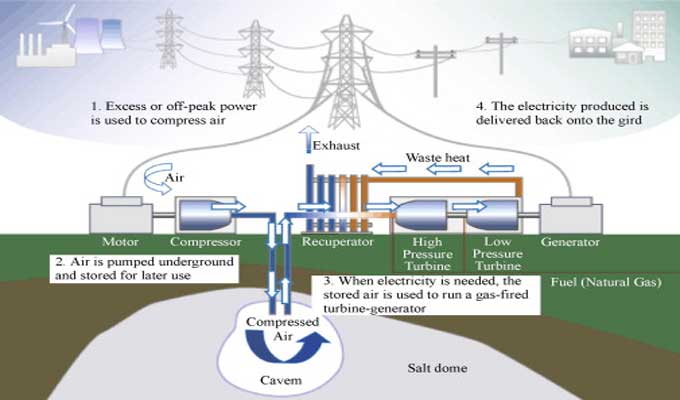
Electrical Energy Storage in Critical Infrastructure: A Future Prospect in Construction

Fuel, gas, and electricity cannot be stored as physical elements because they are not physical elements. Storage of energy is essential for ensuring supply security and stability. Right now, storage is the main issue facing renewable energy sources. This is so because renewable energy sources rely on uncontrollable external climate conditions.
Therefore, the ability to store excess energy produced by renewable sources and use it at times of low production or at night would be a further step towards improving energy use and efficiency.
Hydrogen
Although not a storage method in and of itself, hydrogen is a readily storable energy. When produced from fossil fuels, so called gray hydrogen is already extensively employed in transportation and industry. Other methods of producing hydrogen have arisen in recent years, and each one is designated with a color depending on where it comes from and what emissions it produces.
Due to the procedures used to capture pollutants, blue hydrogen was developed as a less harmful technology. While this is going on, green hydrogen, which is electrolyzed from renewable sources without producing CO2, is developing quickly. Despite being acknowledged as a viable solution for decarburization and emissions reduction, its high cost discourages use.
Batteries
The most well known chemical based storage system is the battery. Although they are not the only type, lithium batteries are the most used due to their high storage capacities. They are widely used at the user level. Indeed, batteries, such as portable batteries or power banks, or the batteries of devices that last for a specific amount of time, are something that we are all familiar with. On this scale, we frequently use the term kWh.
On a wider scale, they also exist, although they haven't developed to be used for high-energy loads yet. While research is currently being done on ways to improve their endurance and make them smaller, among other things, their development, among other areas also for electric vehicles, has pushed prices down quickly.
Define Critical Infrastructures
An infrastructure that is critical to the operation of a state, ensuring its citizens' security and well being, is a critical infrastructure. The management of critical infrastructure is complex, and its maintenance requires constant planning and preparation.
Even in unusual times, such as a conflict or pandemic, earthquake, etc., these infrastructures require special attention. A key area is their power supply, as well as their security of people and data.
Think Energy Storage as a Critical Infrastructure
We wonder how key infrastructures would handle renewable energies and the value of storage throughout this period of the digitalization of services and the energy transition. The usage of fossil fuels to secure supply from many sources will continue, but this industry must be aware of the energy shift and ready itself.
Larger Batteries Installation
Ensuring the energy supply of services is more than vital because a significant portion of these services rely on power. Therefore, the creation of larger batteries that may be installed inside of important structures and urban spaces is a step in the right direction.
Hospital Uses
Consider a hospital during a hurricane or another moment when there is a general power outage. At such instances, it is crucial to ensure the provision of minimum services so that the control systems or operating rooms can provide the necessities. This can apply to analytical tests, low-temperature medication storage, and emergency services.
Power Shortage
Generators would automatically start up in the case of a power outage to ensure supply continuity until the primary grid is repaired. However, they use fossil fuels to do it, therefore the present generators already satisfy these requirements.
This might alter with better electrical energy storage capabilities in batteries. But these industries will continue to rely on their current generators until batteries are dependable and have a high capacity.
Eco Friendly
A number of sectors are anticipating the future of storage. While critical infrastructures prioritize supply maintenance over energy efficiency, this does not imply that they are ignoring the latter. In general, energy storage is playing a bigger and bigger role in crucial energy infrastructure.
Energy storage technologies help to ensure the stability and dependability of the energy system and support the shift to a low-carbon economy by providing backup power, assisting renewable energy integration, providing emergency power, and lowering greenhouse gas emissions.
To learn more, watch the following video tutorial.
Video Source: TotalEnergies
Wrapping it Up
The main goal is to be capable of retaining this energy that has already been produced and use it when there is less of it available. In this case, several technologies are available, but they are expensive, or even the most affordable ones have storage limitations. They are available on a huge scale, such as compressed air, pumped hydro, and thermal storage. The most common of these choices are hydropower plants.


